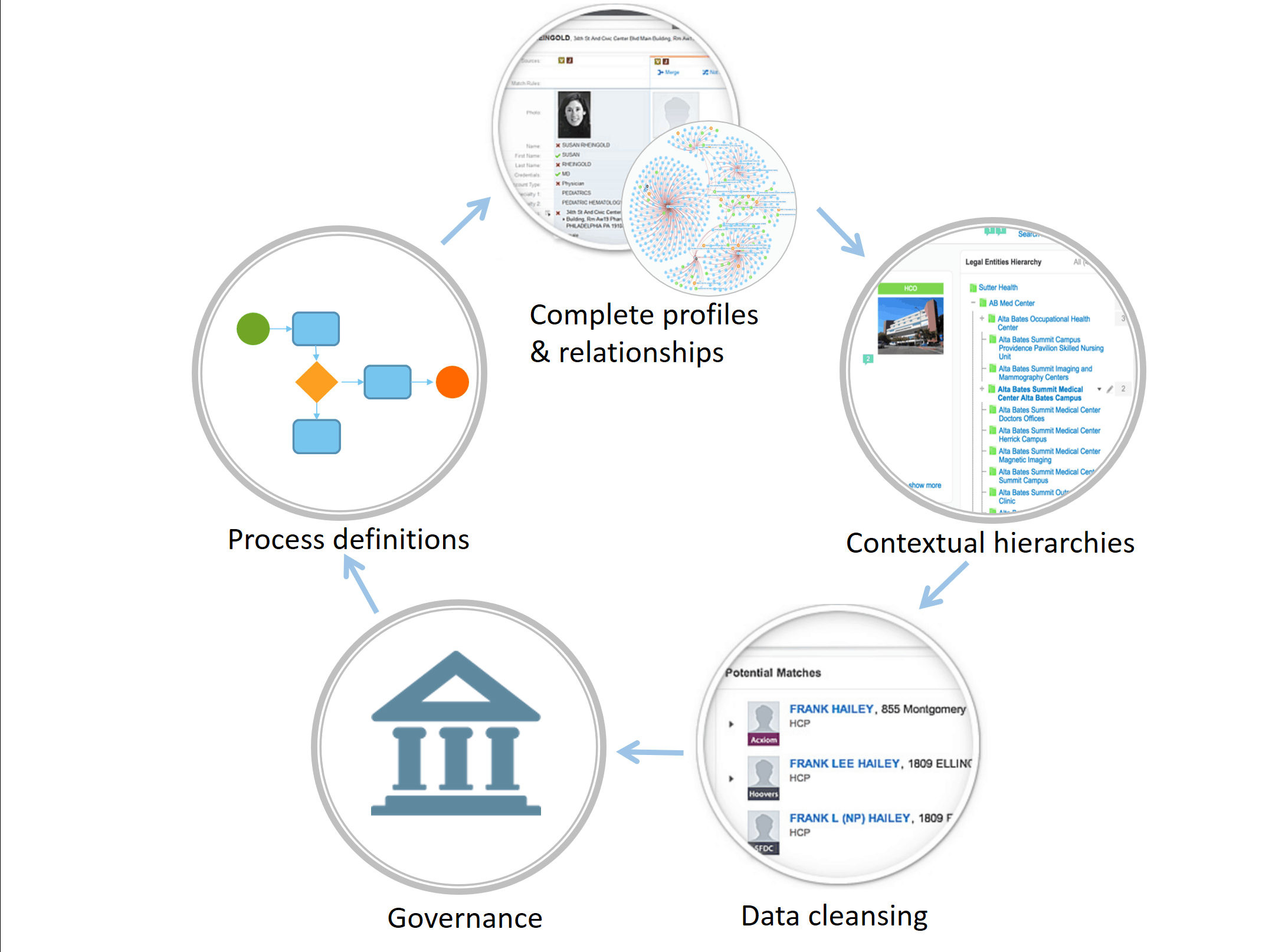In spite of the fact that the term “360-degree view of the customer” has become ubiquitous in the data management and CRM realm for quite some time, it is still quite rare to find a company that has achieved it. The same problems that have plagued companies for years, blocking the value of customer information within an organization, are still alive and well in most companies.
It’s 2016 – why haven’t the problems surrounding data been solved? Certainly there are better tools, more experience, and better insight into the problem than 10-15 years ago. Why is data still such a big problem for the vast majority of companies?
Most of the time the technical crowd dominates discussions about data – data architects, technical analysts, IT managers, and the infamous “Master Data Management (MDM) specialist.” One might think that sales, marketing, and operations team members have no place in solving data issues. As you might suspect, nothing could be further from the truth.
Many critical business problems stem from poor data quality, but business team members usually don’t talk about data, per se. Business users blame software applications, or point to other departments for “not doing their job,” and lump the data issues with other business related issues which obfuscate the significance of poor data quality as a pervasive business issue. Data issues are dramatically slowing down companies’ ability to execute on their go-to-market strategy, yet business leaders are either unaware that data is a key part of the problem or find it too complex and expensive to tackle. Business leaders usually see data problems as strictly an IT issue because of the general complexity associated with data integration, quality, and typical MDM implementation.
Following five-step approach to data management, jointly owned by the business and IT, is modeled to address such data reliability issues. This approach will get you to your business goals in weeks, not years.
1.Define the process
Create process maps or flow charts to document how customer records are managed. Keep it simple and focus on aspects of the record lifecycle within your organization. Take B2B accounts as an example. Focus on the process related to account creation, specify account ownership at creation, and process of changing the ownership to finance. Capture what triggers the change in ownership – signing of a contract, or merely creation of a quote. Document when should you inactivate an account. Define survivorship rules for each account attribute when data is synchronized across systems. Documentation will help you visualize the process and reach a common understanding across all departments.
2.Consider Modern Data Management
Think beyond typical MDM tools that have not solved the issue of customer 360. Consider implementing data-driven applications built on Modern Data Management platform, with MDM as one piece of the overall solution. Specially designed to consolidate data from all internal and external sources, applications created on a Modern Data Management platform support an infinite number of customer attributes and relationships and provide contextual, personalized insights using big data scale analytics, enabling a true Customer 360. Cloud-based Modern Data Management Platform as a Service eliminates the complexity and helps build industry and role specific applications, quickly.
3.Design Organizational Hierarchies That Work
The most important thing to keep in mind while creating customers’ organizational hierarchies is to understand the business need. There are infinite number of ways you can link accounts and customers. Be sure to allocate sufficient time to collect the requirements and understand how your users will be using the hierarchies. While you may be inclined to standardize on a single hierarchy for simplicity of maintenance, it is recommended to support multiple views driven by business logic and visualizations customized for business groups. It’s still the same hierarchy (no data duplication,) but visibility and reporting roll-up changes based on the user group. An example of this is the consolidation of a multi-level legal ownership hierarchy provided by Dun and Bradstreet into a simple three-level hierarchy a sales representative can use for pre-call planning. Sales representatives don’t want to see 35 levels of a legal company structure – they need three levels that represent real-life relationships in the organization.

4.Focus on “Quick Win” Data Issues
To be successful, it’s important that your data management initiative returns some short term benefits in addition to longer term return on investment. You can deliver some quick wins by focusing on enriching your B2B account and contact records with a reference data set like Data.com or Discover.org, and then perform a one-time de-duplication effort to obtain some rather dramatic improvements. While a one-time clean-up effort is nota complete solution, it can satisfy the need to demonstrate short-term ROI.
5.Establish Data Governance
Data governance is an extensive topic. Start with a handful of areas listed below that will deliver at least a 10:1 return on your investment and help you to put the finishing touches on a “bare bones” data management program.
- Establish a distinct owner for each entity (e.g. account, contact, quote, etc.)
- Create a roadmap for systems and data enhancements.
- Create a change governance committee that accepts requests from business and IT teams, evaluates them, and then adds requests to the roadmap.
- Establish a business and a technical owner to manage the delivery team. A roadmap delivery team must have a clear leadership that makes the necessary decisions and ensures on time, on budget delivery.
- Lastly, establish owners for all documented processes. The process owners will act as the one-stop place to submit changes. The owners will work with the delivery governance committee to submit, schedule, and monitor changes.
The five areas listed above constitute a “bare bones” data management program that can address a large percentage of data management issues with a quick return on your investment.
Like this article? Subscribe to our weekly newsletter to never miss out!






